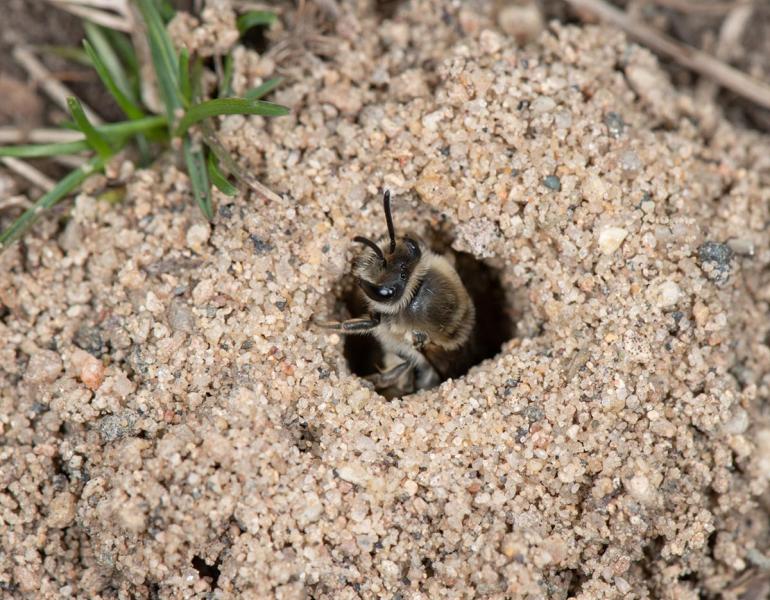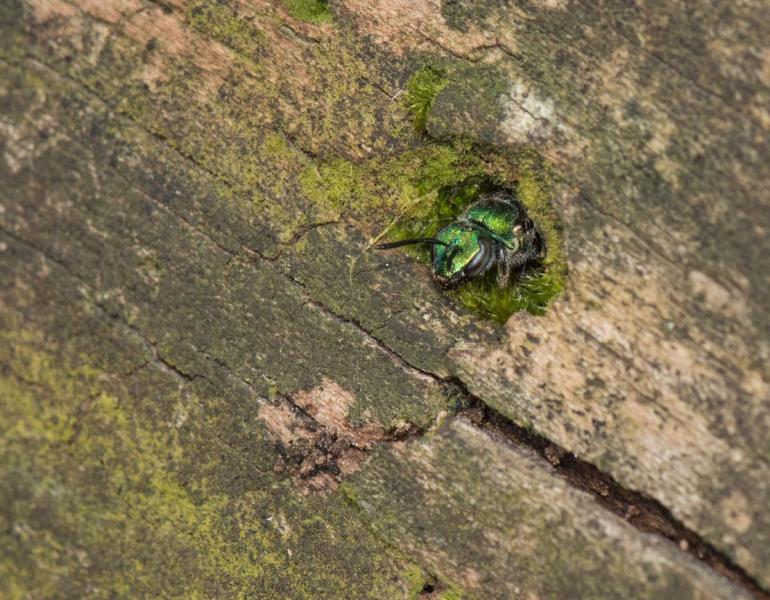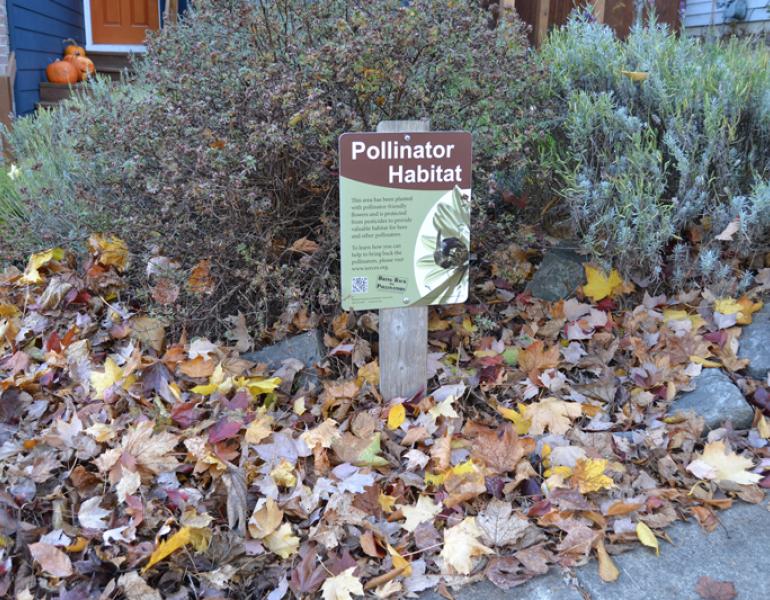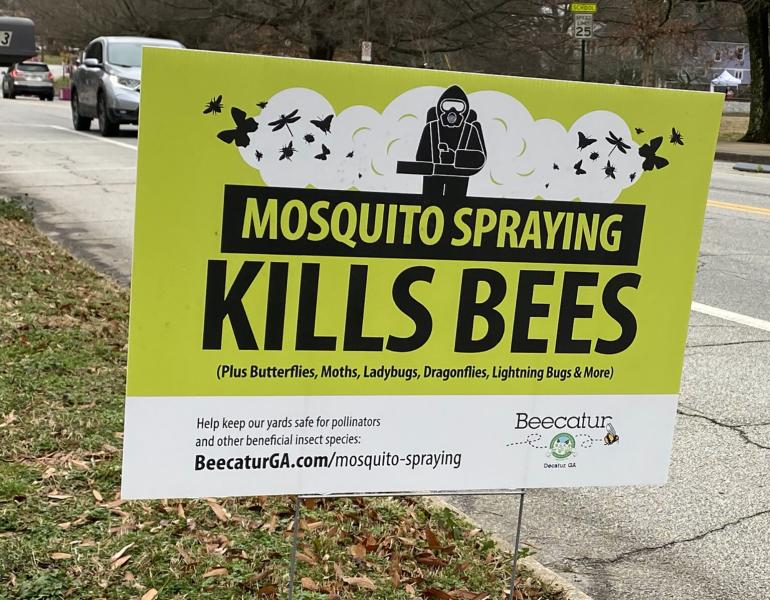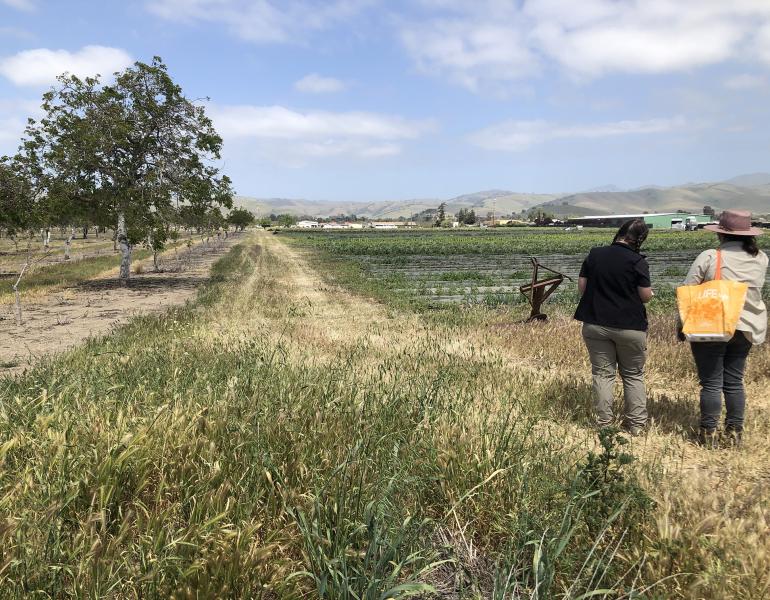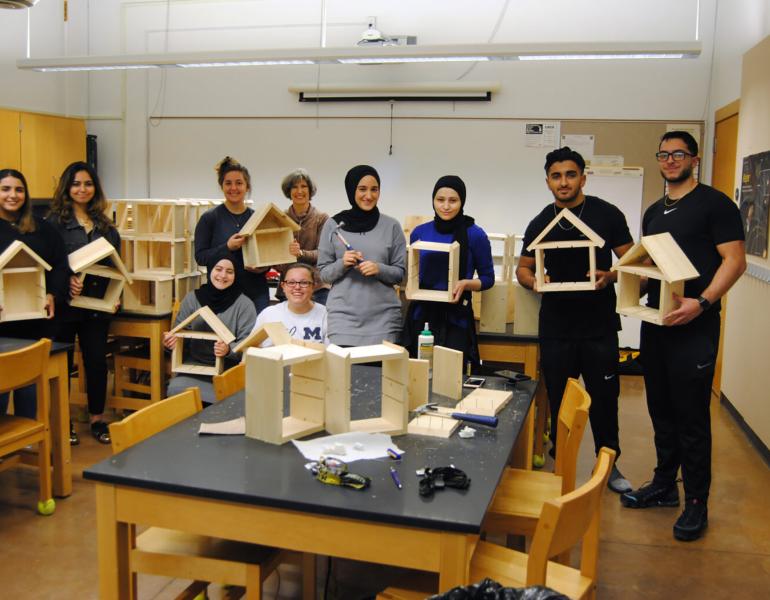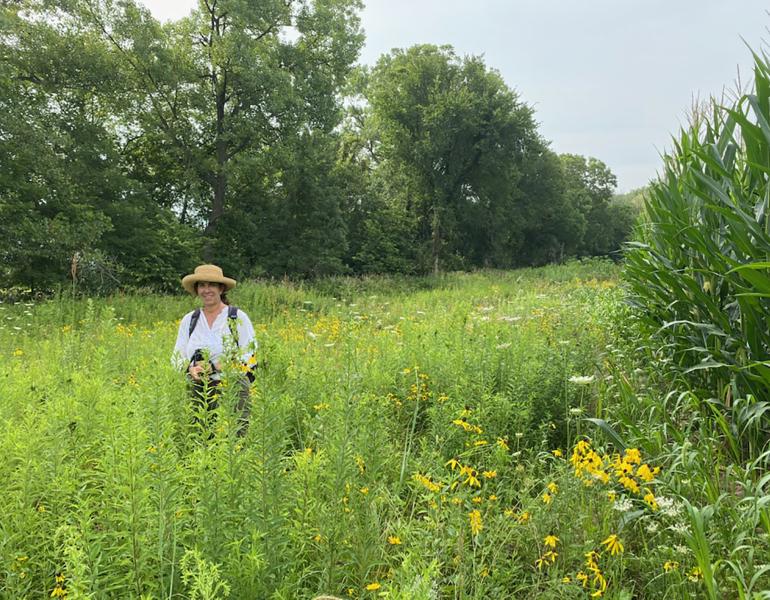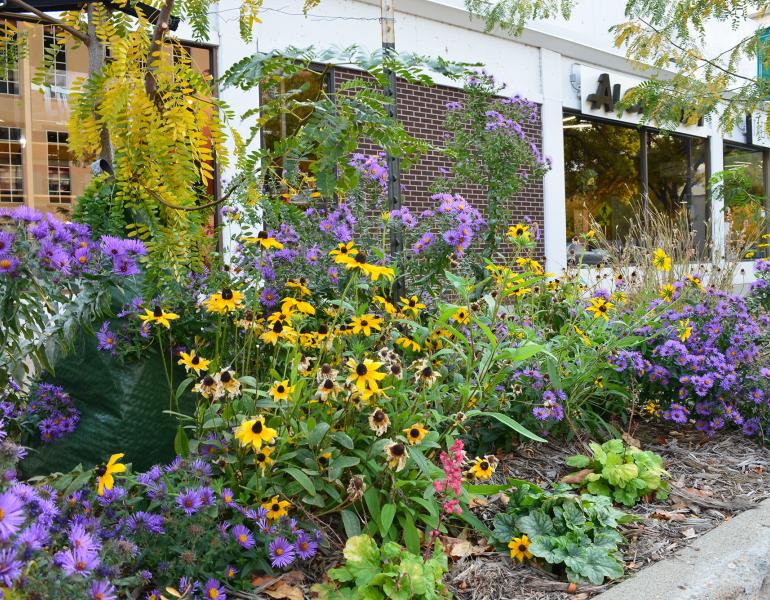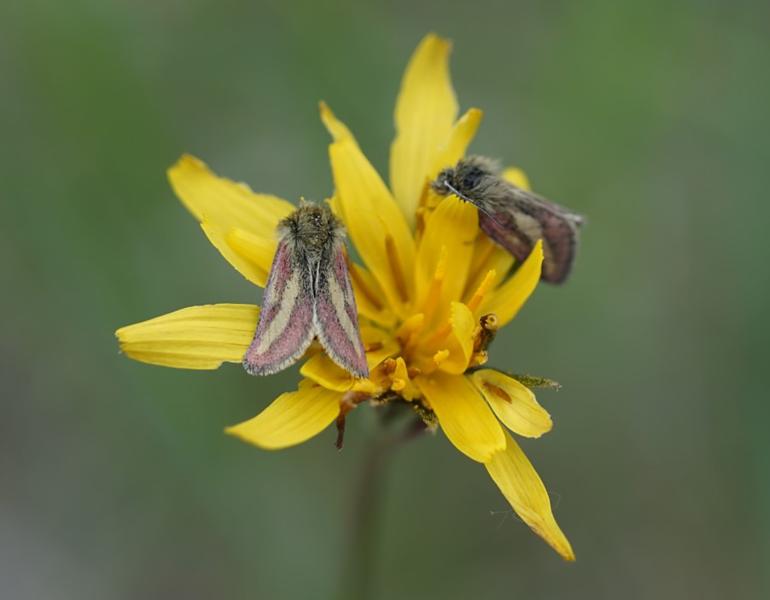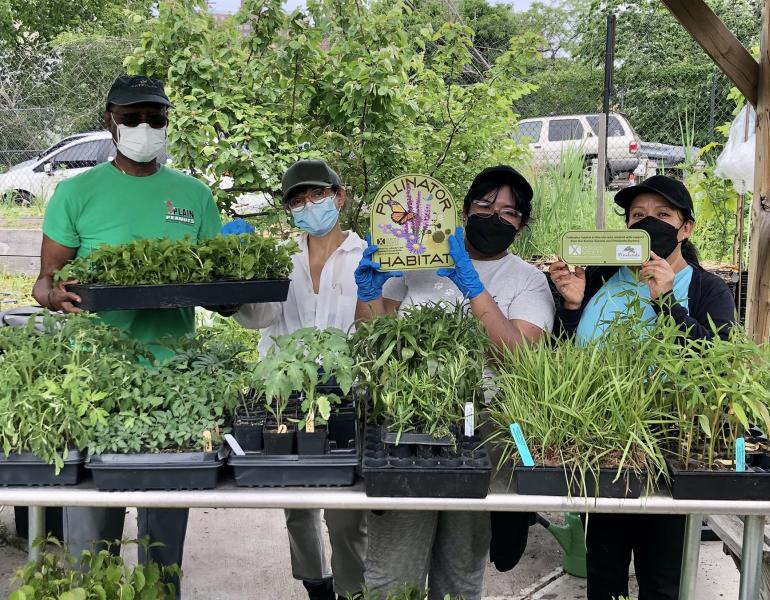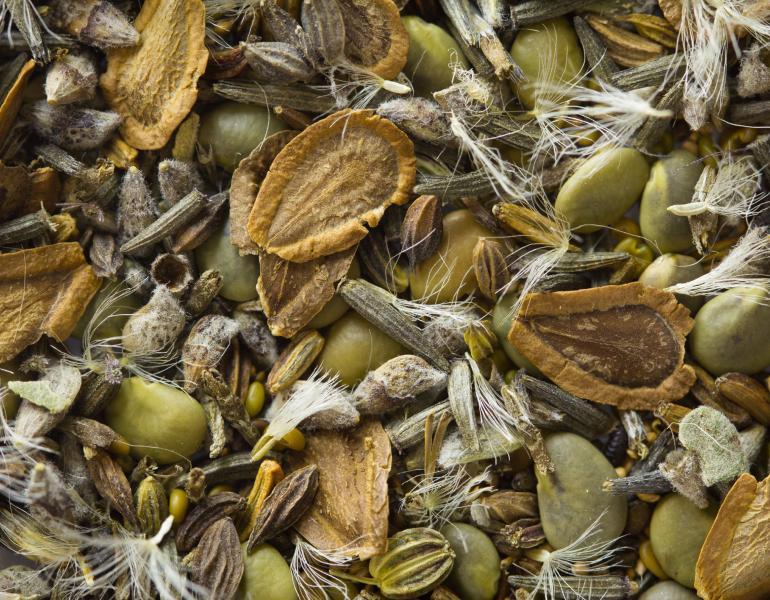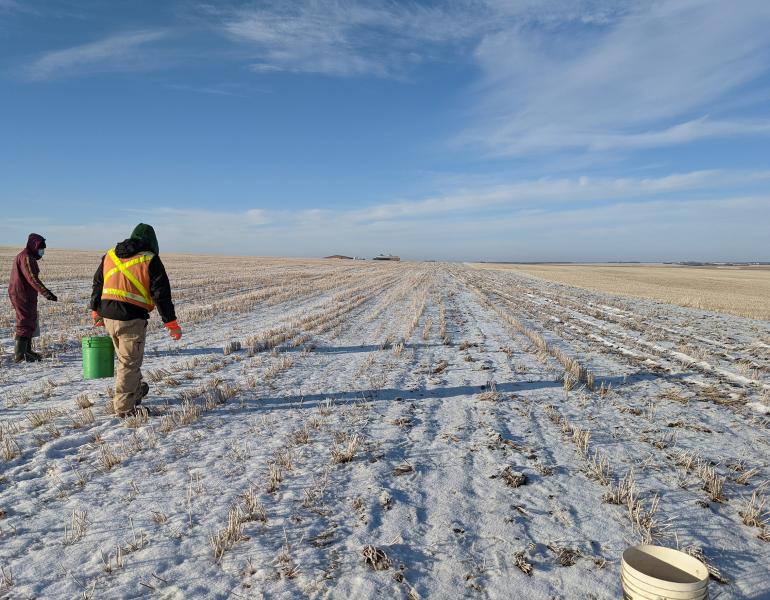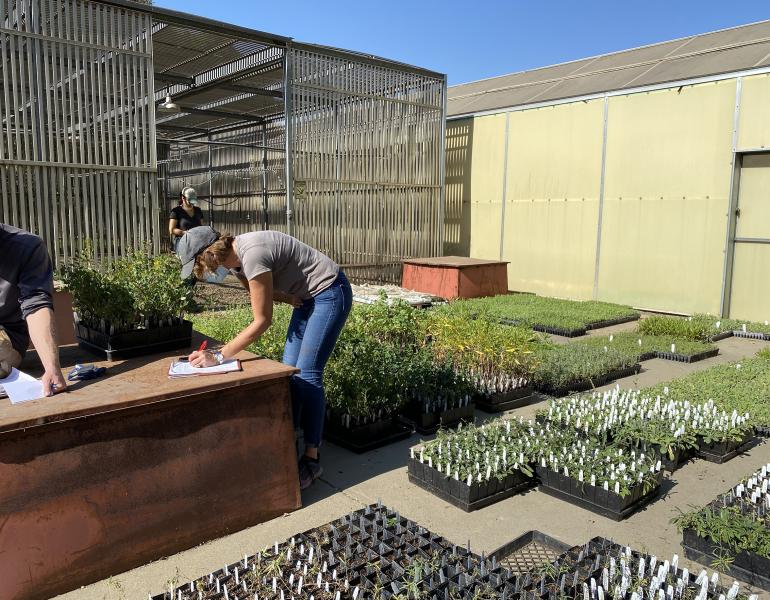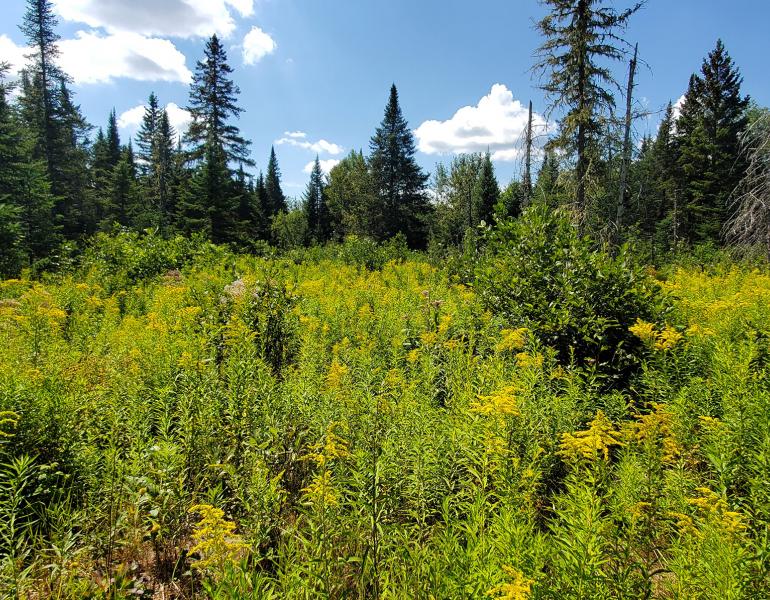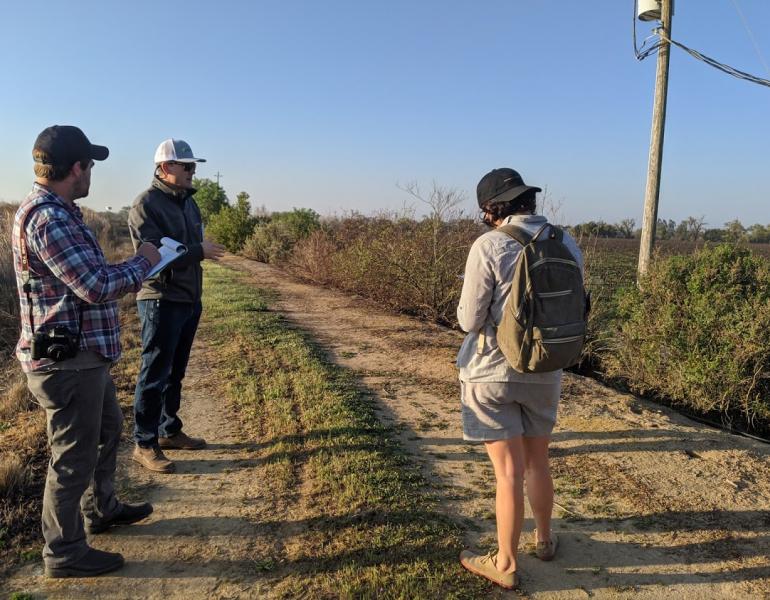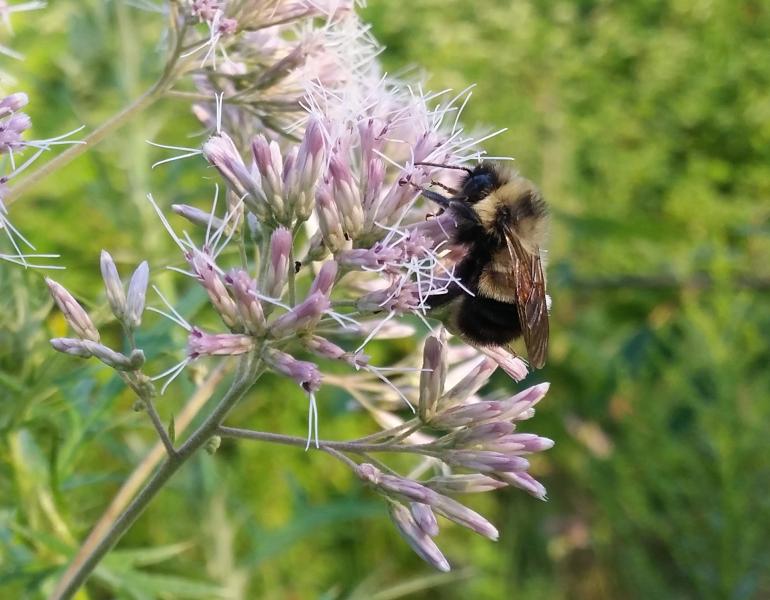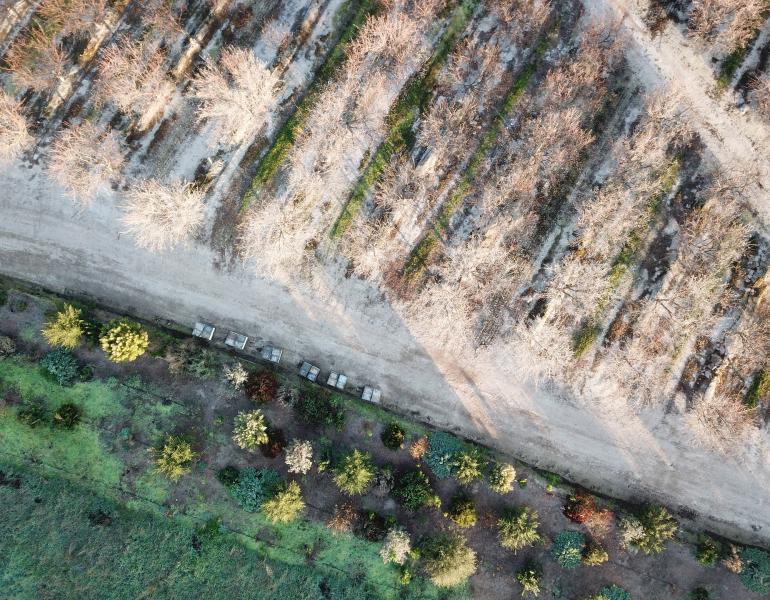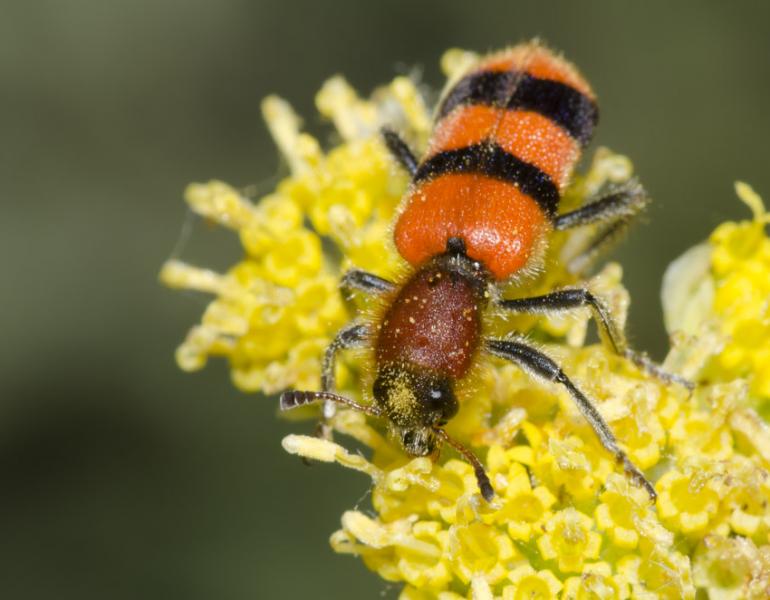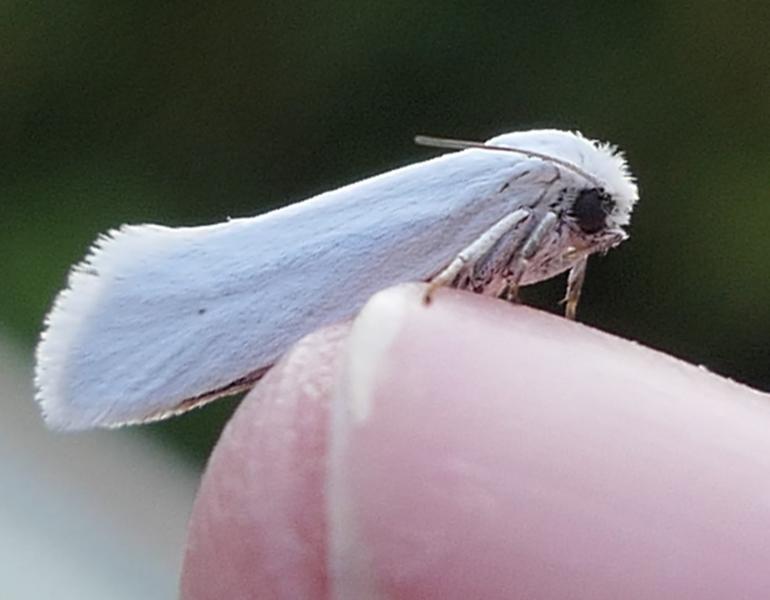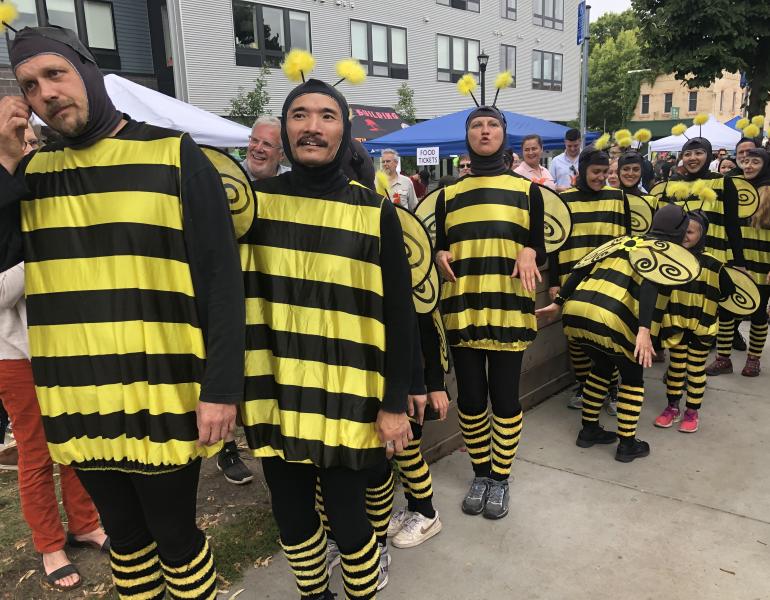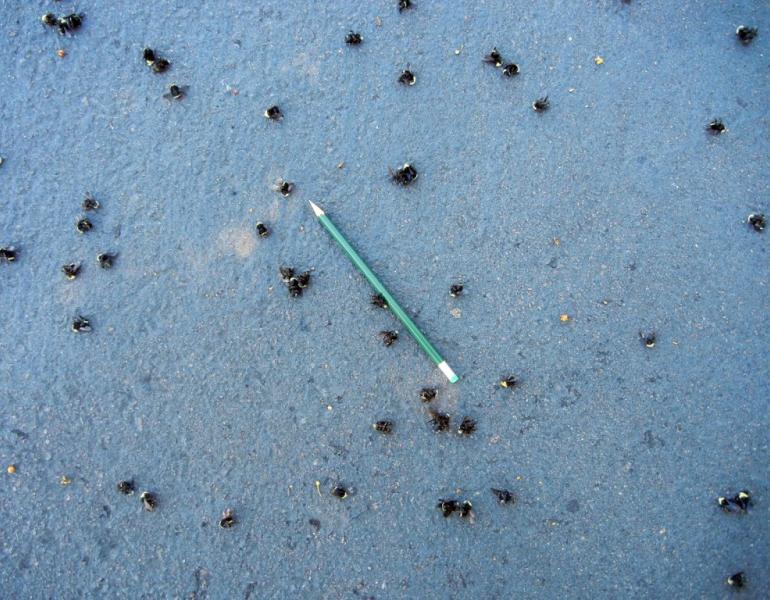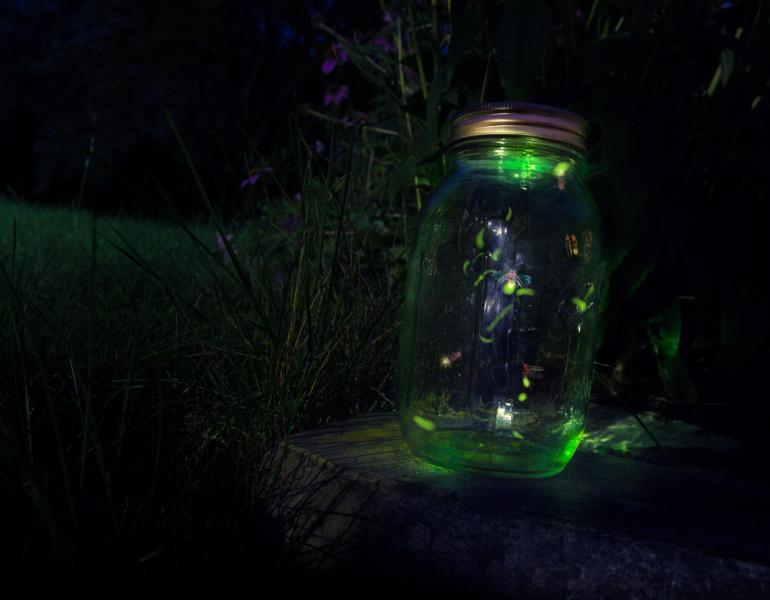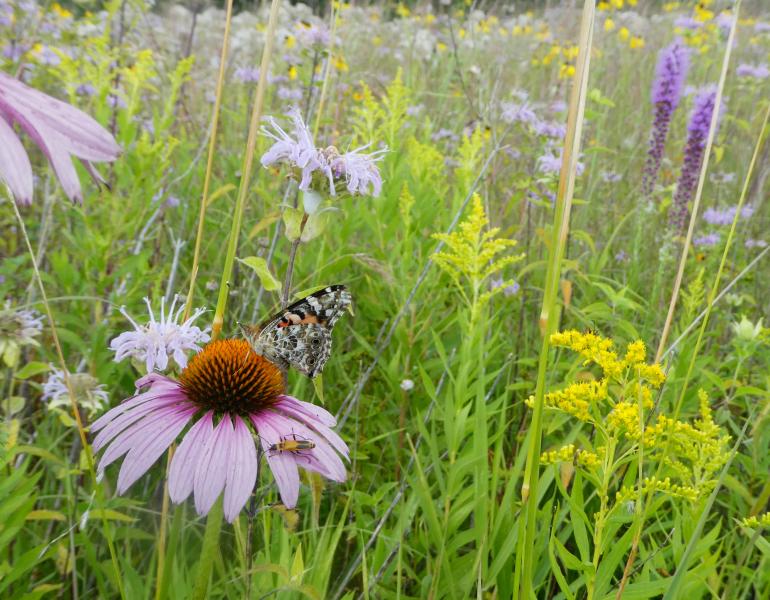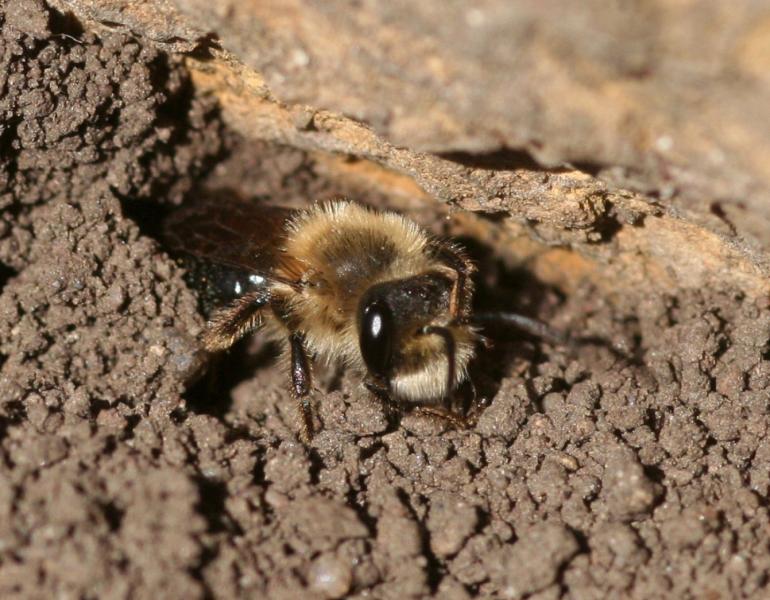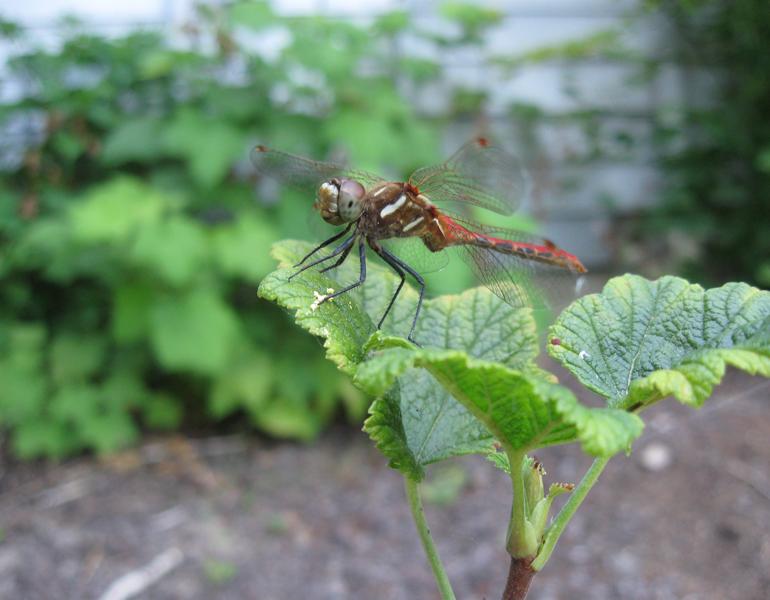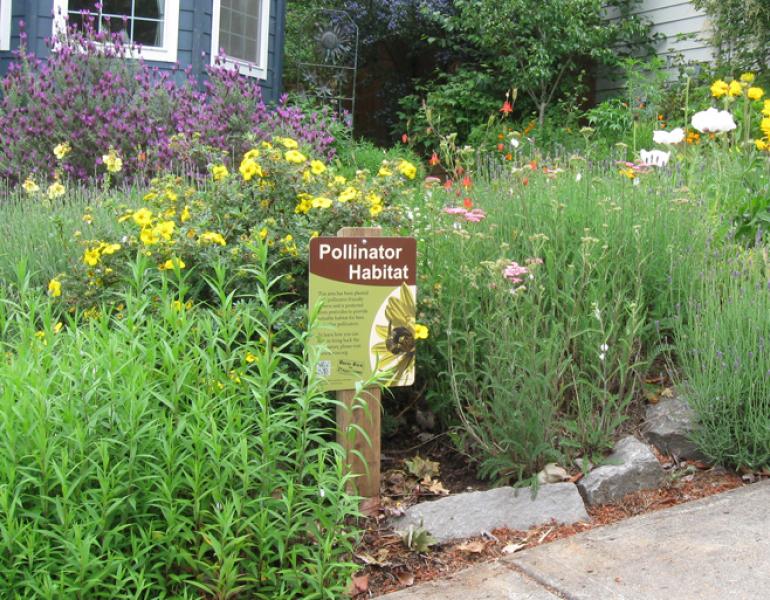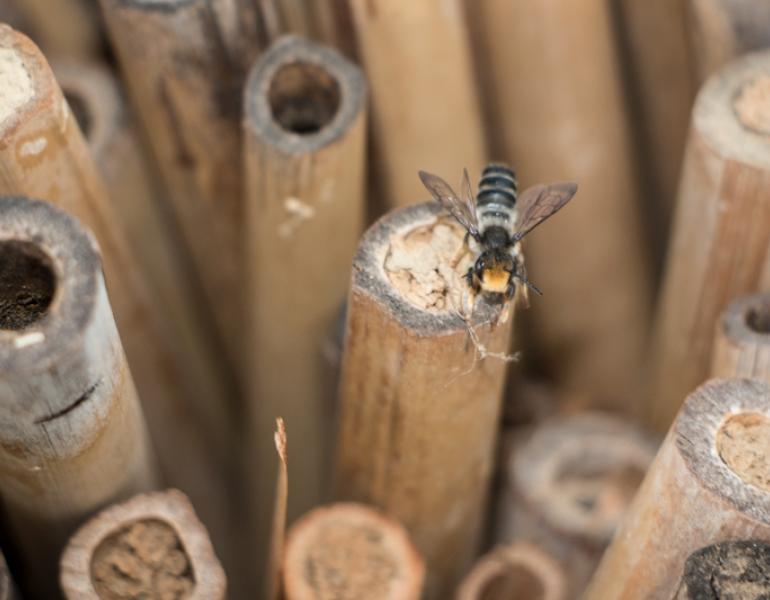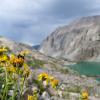Even a humble puddle can make a big impact for your backyard wildlife. Learn how to make one that fits your space.
Bring Back the Pollinators
They Go with Everything: Even a Small Patch of Native Wildflowers Makes a Difference
Jennifer Hopwood shares how adding even a few plants is the perfect complement to the other habitat features of your yard, garden, or balcony.
Clear Space for Bees: Why Pollinators in Your Yard Need Access To Bare Ground
Open patches of soil and sand, with few or no plants, are a key nesting habitat for the majority of native bees, and easy for us to provide.
Wildlife on the Rocks: Providing the Rocky Habitats Bugs Need for Shelter
Rock piles and stone walls might seem like they take yard space away from plants, but these features are crucial to support a diverse wildlife community.
Tiny Places for Tiny Animals: Building the Microhabitats that Bugs Need to Thrive
It’s easy to add small features, like a brush pile, dead stems, or a leafy corner that can make a big difference for wildlife! Here's how.
High School Students Depave a Parking Lot to Plant a Garden
With support from USDA NRCS, Xerces, and the local community, a Philadelphia high school parking lot became a space for gardening and pollinator habitat.
Planting for Bees, Butterflies, and Beauty in the Bronx
Two urban farms in the Bronx demonstrate a symbiotic relationship between people and pollinators. Communities at the Garden of Happiness and Tawqua Community Farm restore quality pollinator habitat and pollinators keep the gardens thriving and producing.
Four Steps You can Take to Bring Back the Pollinators
Bees and other pollinators are clearly facing challenges from habitat loss and pesticide use, even climate change. By managing our gardens, parks, and other greenspaces with pollinators in mind, we can transform our towns and cities to support the insects that are essential for a healthy environment—and if we all do something, together we can have a big impact. Xerces' Bring Back the Pollinators campaign provides one way to achieve this change.
Midwinter Tasks for Pollinator Gardening
Even in January there are small actions you can take to support pollinators. Xerces' Pesticide Program Director Aimée Code shares what's on her winter chore list for her Pacific Northwest pollinator garden.
Creating Wildflower Meadows from Scratch or by Simply Changing Mowing Regimes
When someone asks for help to increase pollinators in their landscape, many times the initial request is to start a pollinator meadow from seed. We love successful wildflower meadows started from scratch—but they can take several years of work. In the right place, just reducing mowing can result in improved conditions for pollinators.
Bee City USA Affiliate Spotlight: Decatur, GA
The Bee City USA and Bee Campus USA network includes more than 270 communities. The Decatur, GA, affiliate has made mosquito spraying by individual homeowners a central part of its advocacy efforts to protect pollinators.
Santa Fe Pollinator Habitat Kit Program Connects Pollinators and People
In Santa Fe, NM, Xerces is working with local partners to develop a city-wide Pollinator Trail focused on creating connected habitat through neighborhoods that lack greenspaces. In September, after months of planning and preparation, 350 habitat kits were distributed to residents and organizations. When many people come together around a common goal, small efforts can quickly add up to large-scale conservation.
The Value of Conservation Planning
Land owners and managers across the state of California have taken up the call to get more habitat in the ground for monarchs. But there’s one important process that comes into play prior to on-the-ground restoration: before we can plant, we plan.
Bee City USA & Bee Campus USA Affiliate Spotlight: University of Michigan-Dearborn
Pollinators are in decline, but what can a small or medium-sized university or college do to help? As it turns out, plenty. The University of Michigan-Dearborn has an outsized, long, and rich tradition of promoting environmental education and sustainability, especially in regards to pollinators—and in autumn 2019, was certified as a Bee Campus USA affiliate.
Coming Home: A Woman Landowner’s Conservation Calling
The next generation is something Ruth Rabinowitz spends a lot of time thinking about. As an Iowa farmer with a deep commitment to conservation, she feels it’s important for her to remember to look beyond her own lifetime.
Pollinator Conservation Program Digest – July 2021
In July's Pollinator Team Digest, Sarah Hamilton Buxton describes a multi-organization collaboration bringing pollinator plantings to the heart of Bismarck, ND, and Jennifer Hopwood introduces the amazing life beneath our feet that is at the center of a new conservation initiative focused on soil life.
For the Love of Moths
Moths get a bad reputation as pest insects or being overly drab, which couldn’t be further from the truth. Even the dullest moth from afar is actually quite beautiful when you get up close and day-active species are so large and colorful that they’re often confused for butterflies..
Pollinators Find a Home on Roadsides
State Departments of Transportation manage millions of acres of land and have an opportunity to make a significant difference for pollinators. Roadsides provide pollinator habitat, as well as connectivity across otherwise inhospitable landscapes -- and may be home to native plant communities that can no longer be found in surrounding lands.
Great Plains Rangelands Are Important Habitat for Pollinators
Rangelands of the Great Plains are a highly diverse—and endangered—ecosystem filled with subtle beauty that is often underappreciated. These landscapes evolved with natural disturbances, such as grazing and wildfire. Maintaining disturbance through active management is essential for healthy rangelands and pollinators.
Pollinator Protection Starts at Home—and can Spread Faster than Weeds!
Something as simple as observing the bees and other pollinators in your garden is a wonderful way to celebrate Pollinator Week. Late June is a time when, across the county, bees and butterflies are emerging and making themselves known. It is also a great time to pledge to do more for all these amazing creatures.
Xerces Society and the NRCS: 17 Years of Conservation Partnership
A chance meeting 17 years ago between a Xerces staffer and an NRCS biologist has blossomed into a nationwide partnership and resulted in the creation of more than 1,000,000 acres of habitat on the ground across the U.S.
Building Resilient Communities: Reflecting on a Year of Challenge and Opportunity for Bee City USA & Bee Campus USA
The accomplishments of Bee City USA and Bee Campus USA communities during the last year are a textbook example of resilience. Rather than canceling projects and activities, the committees adapted to the new conditions, finding ways to continue creating spaces for our ecological communities to do the same.
Reflections on Two Decades of Pollinator Conservation
The Xerces Society was one of the first organizations to focus on protecting pollinators. Over the last two decades, it has been at the forefront of the pollinator conservation movement and is recognized as a trusted source of science-based advice and information.
Pollinator Conservation Program Digest – June 2021
In this month's update from our pollinator conservation team, Kelly Gill reports on the successful distribution of habitat kits across a nine-state region of the Mid-Atlantic and Northeast, and Sarah Foltz Jordan describes a multi-farm project to expand pollinator habitat in Wisconsin.
Pollinator Conservation Program Digest – April 2021
In this edition, Hannah Mullally describes a project to create a pollinator habitat demonstration site in the unique conditions of northern Maine, Karin Jokela shares her experience and suggestions for designing conservation seed mixes in Minnesota, and Anna Murray gives a glimpse into habitat planning and monitoring in California.
New in Santa Fe: Pollinator Trail and Habitat Kit Program
Santa Fe, New Mexico, is the home of our pilot Pollinator Trail program, which aims to address habitat loss in urban areas. The project will create connected, climate-resilient pollinator habitat in an urban landscape through the distribution of habitat kits and development of partnerships with local organizations to conduct pollinator conservation outreach.
To Protect Pollinators, Talk to Your Nursery
Creating a welcoming home for local pollinators in your backyard or city park is reason enough to choose plants free from harmful pesticide residues. But how do you figure out if the plant you want is free of pesticides that can harm pollinators?
Pollinator Conservation Program Digest – February 2021
Our pollinator team members provide regular digests on their work. In this bumper edition, three of our staff provide updates. Stephanie Frischie discusses planting seeds, Nancy Lee Adamson highlights monarch conservation in the Southeast, and Emily May introduces a newly released video.
Arrancando la Primera Iniciativa de Conservación de Polinizadores para el Centro de México
Héctor Ávila Villegas is working to promote pollinator conservation in Central Mexico. He has planned and implemented habitat projects and is engaged in public outreach. This blog is part two of his story.
Pollinator Conservation Program Digest – December 2020
This edition focuses on work done across the country to support monarch butterflies and other pollinators. Jessa Kay Cruz describes how Xerces supports groups in California undertaking habitat creation projects, and Jennifer Hopwood presents a series of fact sheets about milkweeds, part of a nationwide project to provide information to roadside managers.
Conservación de Polinizadores en Aguascalientes, México
Over the last couple of years, Xerces Society staff have had the pleasure of supporting Héctor Ávila Villegas with his efforts to promote naturalized spaces that function as pollinator habitat and outreach in the state of Aguascalientes, Mexico.
Pollinators Take Priority as Xerces Expands Work in New Mexico
New Mexico boasts an impressive diversity of pollinators, driven by the variety of landscapes and plant communities within the state. Fortunately for pollinators, the Xerces Society expanded their pollinator conservation efforts this year by adding a new regional position, the Southwest Pollinator Conservation Specialist, based in Santa Fe, New Mexico.
Pollinator Conservation Program Digest - November 2020
In this edition of our monthly pollinator team digest, Kelly Gill offers an update on the New England Pollinator Partnership, and Jennifer Hopwood shares her experience of creating a backyard pond—not our usual fare for pollinator updates, but a great addition to any wildlife garden.
Pollinator Conservation Program Digest – October 8, 2020
In this pollinator team digest, Sarah Nizzi offers an account of how habitat work has continued on an urban farm in Iowa despite the pandemic, and Nancy Lee Adamson reports on events held last year in Georgia that supported both gardeners and farmers.
Pollinator Conservation Program Digest – September 3, 2020
In this edition of our regular updates from the Pollinator Conservation Program, Jessa Kay Cruz gives a view into work being done with vineyards in California, and Nancy Lee Adamson shares her experience of how community science creates connections between people and nature.
U.S. Fish & Wildlife Service Fails to Designate Critical Habitat for the Rusty Patched Bumble Bee
The U.S. Fish & Wildlife Service decided to not designate critical habitat for the rusty patched bumble bee, despite its previous finding that habitat loss threatens the bee. Failing to designate critical habitat may hinder recovery of the rusty patched bumble bee, which has already been lost from more than three quarters of its historic range.
Moving Beyond Flowers: Natural Nesting Habitat for Bees and other Insects
When landscaping for pollinators, there’s a (very understandable) tendency to focus on flowers to provide pollen and nectar for bees and other insects. However, flowers, alone, aren’t enough. We also need to provide nesting and overwintering habitat.
Bee Better Certified: Protecting Bees and Providing a Level Playing Field for Farmers and the Companies that Support Them
Four years ago, we began to hear the same question from a number of food companies that wanted to do more for pollinators: Could Xerces develop a certification program to verify pollinator conservation practices on farms and provide a transparent way for consumers to recognize and differentiate food products produced in ways that are better for bees? The answer was Bee Better Certified.
Notes from the Other Orders: Beetles as Pollinators
When we think about pollinators, the first species to pop into mind are usually bees, butterflies, and maybe, hummingbirds. But pollinators are a much broader group of animals that encompasses species from several groups of insects, including beetles such as like soldier beetles, scarabs, long-horned beetles, sap beetles, and checkered beetles.
The Night Shift: Moths as Nocturnal Pollinators
The work of pollination is never over—even after dark! While some flowers close when the sun goes down (the technical term for this is floral nyctinasty), most flowers are still accessible at night. When our day-active (diurnal) pollinators turn in for the evening, nocturnal pollinators such as moths, bats, beetles, and even some species of bees take on the night shift to feast on nectar.
Evolution in Attitudes Leads to Greater Interest in Pollinator Conservation
Twenty years ago, being referred to as the “bee guy” wasn’t always positive. In contrast, today many people are keen to learn about what they can do to protect pollinators. We are proud to be part of the reason that the public has become more aware of, and engaged in, pollinator conservation.
To Protect Pollinators We Must Address All Risk Factors
Recent media coverage of a study on Tilia trees could lead to a dangerous misinterpretation of existing science—incorrectly exonerating neonicotinoid insecticides, which are known to harm pollinators.
Nature Close to Home: Reimagining Gardens to Support Invertebrates
Scott Hoffman Black, executive director of the Xerces Society, encourages gardeners to increase the diversity of native plants, ensure that there are places for insects to nest, and avoid using pesticides.
Let’s Make Every Week Pollinator Week!
Without a doubt, every week is Pollinator Week here at the Xerces Society. Here are a variety of ways to support our efforts to conserve these vital invertebrates throughout the year—no matter where you live!
Remember the Ground Nesting Bees when You Make Your Patch of Land Pollinator-Friendly
Providing nesting sites and reducing or eliminating pesticide use is key to supporting these important pollinators.
Bring Back the Pollinators During National Pollinator Week
With Pollinator Week upon us, now is the time to reaffirm our commitment to protecting these vital invertebrates. Here are some tangible ways to help.
Pesticide-Free Gardening Tips for Earth Week and Beyond
Please consider spending Earth Week in the garden, enjoying the diversity of insects, and taking a few of the actions outlined below to simultaneously minimize pest problems and avoid the use of pesticides.
Pledge to Bring Back the Pollinators—on Earth Day and Every Day
During Earth Week 2019, we are asking you to consider taking simple, yet impactful, steps to make the world better for bees, butterflies, and other essential invertebrates.
How Our Gardening Choices Affect the Health of Our Waterways
Pesticide Program Director Aimee Code shares thoughts on her garden, information about pesticide impacts to our watershed, and news about upcoming Xerces projects in this article from Wings Magazine.
Are you up for the Million Pollinator Garden Challenge?
Can the nation establish a network of one million pollinator gardens within two years? Yes we can!
5 Ways to Increase Nesting Habitat for Native Bees
Recent research suggests that pollinators do better in urban environments, yet these mowed, mulched, and managed landscapes frequently lack a sufficient amount of nesting habitat needed to support large numbers of bees. As wild bees move off ag lands and head for the cities and suburbs, they may struggle to find their “dream home” amongst ours.




